Marcella Cooking Stuff • Olive Oil

Let's talk about olive oil!
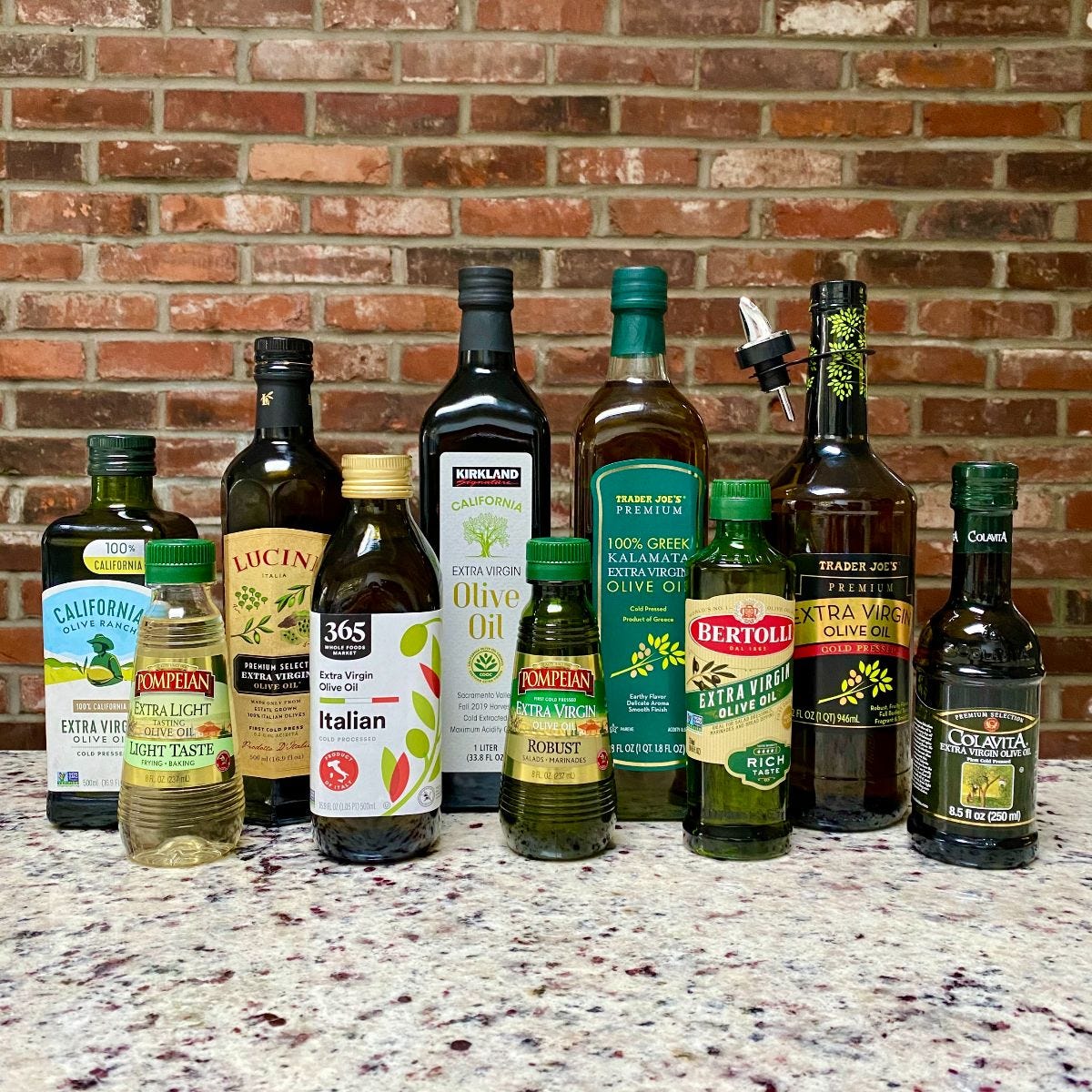
Last weekend I posted a video of Marco and me drinking, dipping, and tasting olive oils. Less than 24 hours later I got a message from a follower in Portugal. We had talked before and she informed me that she is an olive oil producer and a certified taster. She quickly pointed out, at no surprise to us, that we did the test wrong then she schooled me in olive oils.
The biggest thing I learned this week is that there is so much to learn about olive oils. I am in no way an expert on them and we are just going to scratch the surface today.
One of the first things I learned is that olive oil is like wine. The type of olive, soil, location, weather, ripeness, harvest timing, method, manufacturing process, country regulations, and storage of the oil all impact the flavor. That's a lot of things that factor into good olive oil!
So to write a list today and tell you which of these ten is the best is impossible. Like wine, the olive oil you like will probably be different than the olive oil I like.
For this project, I choose ten olive oils that you guys use and requested. I looked into each olive oil. I will share what I found, what we thought of each oil, as well as my recommendations and some tips that my new internet friend in Portugal taught me. I broke it down into three categories: oils I wouldn't buy, oils I might buy, and oils I would buy.
Let's get our olive oil basics out of the way.
What is olive oil?
Olive oil is the liquid fat extracted from pressing whole olives, a tree fruit from the Mediterranean region.
How is it made?
The process looks like this: harvesting, crushing, mixing, and extracting.
Traditionally olives were hand-picked or shaken from trees when branches were hit with sticks. Today we have machines that send vibrations up trees to shake the olives loose and nets to catch the fruit and prevent them from hitting the ground and bruising. Then the olives are crushed into a paste, mixed for some time to help the olives pick up additional flavors, and then the oils are extracted.
Once the oils are extracted they can be refined, bleached, and deodorized. Refining reduced acidity and removes bitterness. Bleaching removes naturally occurring pigments resulting in a lighter color oil with fewer nutrients. Deodorizing removes any olive aroma. This is important and we will touch on it again shortly!
What are the different grades of olive oil?
There are three grades and in each grade, there are a few different types.
Extra Virgin
Extra virgin
Premium extra virgin
Virgin
Fine virgin
Virgin
Semi fine virgin
Olive oil
Pure olive oil
Refined oil
Extra virgins are the top oils followed by virgins. They have only been pressed once and the difference between them is a slight acidity percentage and flavors. "Olive oil" is the lowest quality olive oil that has been refined, bleached, or deodorized after the first press. The more refining = the worse it is for you.
How do we pick a good olive oil at the store?
Using what we just learned, when we head to the grocery store we are going to buy "extra virgin" only! We will never ever buy light or extra light oils, got it?
Then we are going to lean toward the oils packaged in dark glass or metal. These help the oils stay fresh longer and if a producer cares about their oil (we want them to care) they won't put it in a clear glass or plastic bottle.
Next, flip that bottle over and look for the country of origin. When a product says "product of Italy," it does not mean that it is made from Italian grown olives. It could mean that a mystery oil was just bottled there. Instead, we are going to look for country origin initials like IT for Italy. When I was at Costco I flipped the bottles over and found them right away. They may print them in a small font but they should be there.
We are also going to avoid blends. If you see 5 countries listed, skip it. We want our oils coming from one country and even better would be from one farm.
The last thing we are doing to check for is a best by date. We want one that doesn't expire anytime soon. Ideally, we would like to find a harvested or pressed date to get a bottle that was recently manufactured but the best by date will do.
What about all these certification labels?
To put this simply, the majority of the world's olive oil is unregulated. The international standards are pretty broad leaving room for mislabeled and altered oils. The International Olive Council regulates 44 countries around Europe and the Mediterranean.
We have a few councils in North America. The North American Olive Oil Association label is the label I saw the most often. They hold the same standards as the International Olive Council but again they can be pretty broad. The California Olive Oil Council tests only extra virgin olive oil and the Olive Oil Commission of California tests all olive oils. Both aim to accurately test and label oils produced from California.
The list goes on for tests and certifications. If you see any of these labels it means the oil was tested but it is not the end-all label of quality.
How do we know if an olive oil tastes good?!
So you picked up a bottle of extra virgin olive oil. How do you know if it's "good?" You are going to have to taste it!
First, start by smelling it. Really get your nose in there, swirl it around, warm it up, and sniff. Positive olive oil scents are usually categorized as fruity. You may also smell a fresh olive scent and grassiness.
Then you want to taste the oil. Take a sip of about a tablespoon, swirl it in your mouth to coat your whole tongue, inhale and exhale a bit, then spit it out! Don't swallow it like Marco and I did. Olive oil can taste fruity, grassy, olivey, bitter, herbal, and even a little spicy. You do NOT want your olive oil to taste:
Fusty - Barnyard or swamp like which occurs from olives sitting in heaps for too long and fermenting.
Rancid - Like crayons or paint thinner from the oil aging and oxidizing.
Winey - Sour or vinegary from fermentation.
Musty - When wet olives grow mold before milling causing a moldy taste.
Frozen - A flavor similar to green apples or mushrooms caused by the olives getting hit with a frost before processing.
Metalic - The oil can pick up a metallic flavor from the machinery not being cleaned properly.
Where should I keep my olive oil?
Similar to the spices we talked about a few weeks ago, olive oil is affected by heat, air, and light. Buy olive oils in a dark glass bottle or tin and store them in a cool cabinet away from your oven and stove. You've got about 6 months from the day you opened it before the flavors start to change.
Can I use olive oil to cook with high heat?!!
There are a lot of claims out there that olive oil shouldn't be used for high-temperature cooking and frying. Olive oils smoke point is on the lower side at 410 degrees, true, but there is very little evidence-based research that it is bad for your health. Lots of claims but not lots of facts. Taking any oil past its smoke point is not advised but not just olive oil.
In my house, I use olive oil for pretty much everything. My olive oil producing friend in Portugal uses it for literally everything. When it comes to flavor, if you don't want an olive flavor you could use a neutral oil, but I find in most dishes, the olive tastes fade behind the main flavors. Especially if you are using a mild California oil.
I say, cook with the oil. Be cognizant of its smoke point but cook with it!
Let's taste these olive oils!
For this test, I grabbed ten olive oils from four grocery stores. I shopped at Trader Joe's, Whole Foods, Hy Vee, and Costco.
Marco and I did 5 rounds of testing:
Fridge Test* - Each oil was refrigerated and checked at 24 and 48 hours. Pure EVOO should solidify, blends should stay liquid.
Taste Test - We took a sip of plain oil.
Dipping Test - Dipping bread into each oil.
Dressing Test - Dipping lettuce into a simple vinaigrette.
Cake test - I baked four cakes with four top oils to see which had the most flavor.
As well as testing I looked into each oil to find as much detail as possible on when and where the olives were grown, pressed, and bottled.
I broke the results down into a few categories:
Oils I wouldn't buy
Oils I would maybe buy
Oils I would buy
*This fridge test is not 100% accurate but we wanted to try it just for fun. Our results were all over the place and we don't think they indicate anything legitimate but I included them anyway.
Olive oils I wouldn't buy:
Pompeian - Extra Light Tasting Olive Oil
8 fl. oz. - $3.49 - Hy Vee
Price per oz - $0.43
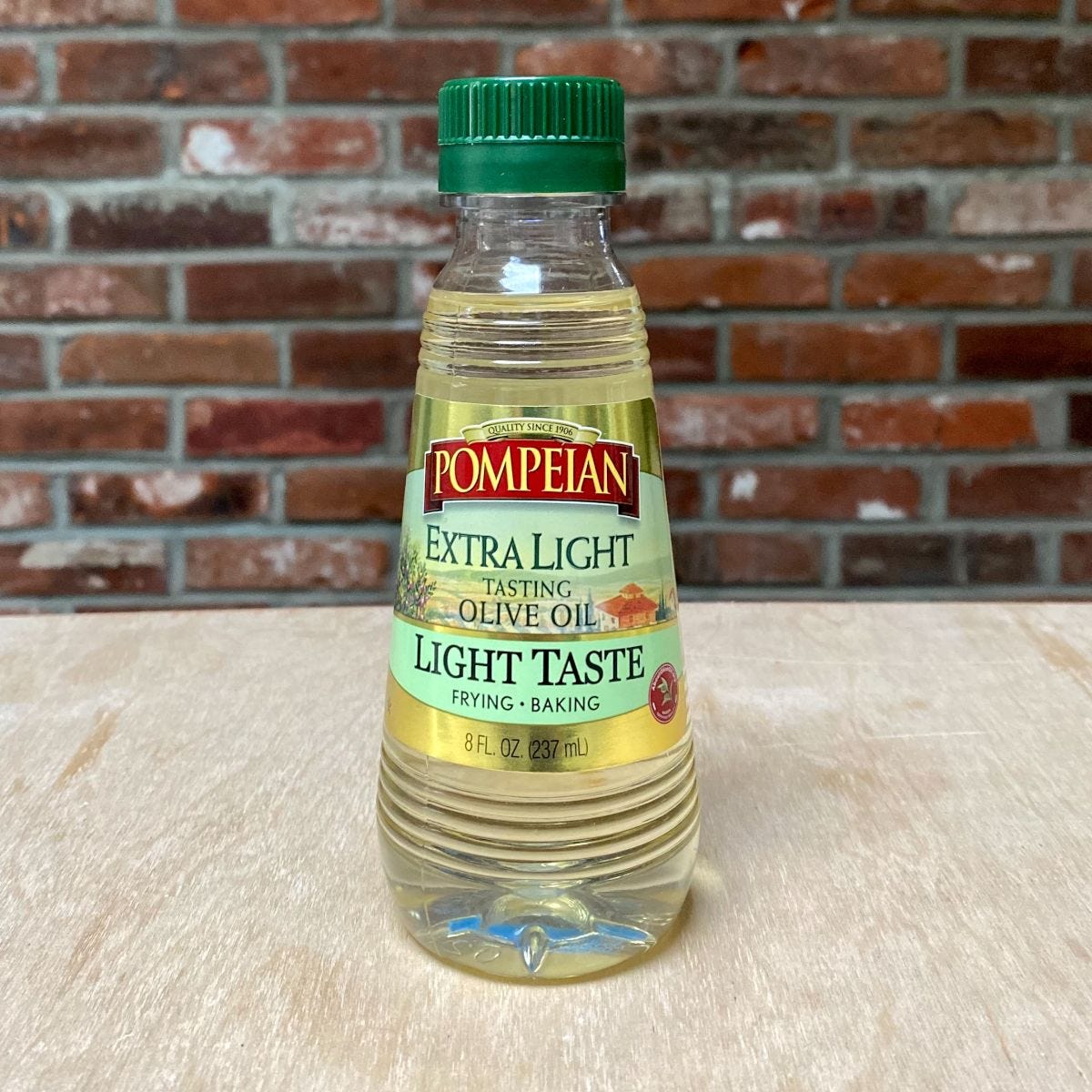
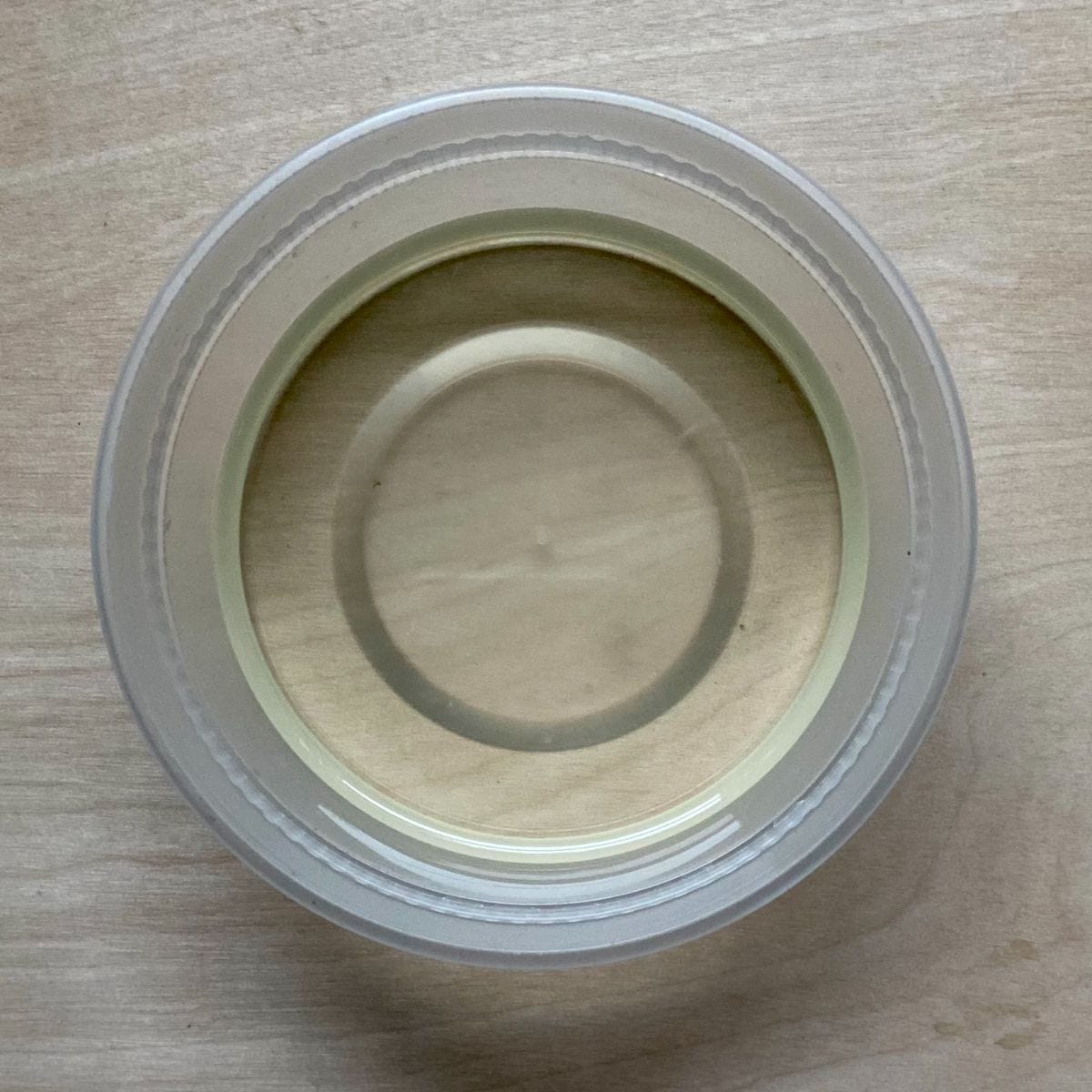
Ingredients: Not listed
Origin: Spain and Tunisia
Date: Best by 07/14/22
Acidity: Not listed
Packaging: Clear plastic bottle
Fridge Test: 24h partially liquid and chunky, 48h solid
Taste Test: Fail
Dipping Test: Fail
Dressing Test: Fail
Final Thoughts: Not extra virgin, extra light, clear plastic bottle...everything about this says not good. It was gross. Smelled and tasted rancid and bland with no olive flavor. Do not buy this!!
Pompeian - Extra Virgin Olive Oil
8 fl. oz. - $3.69 - Hy Vee
Price per oz - $0.46
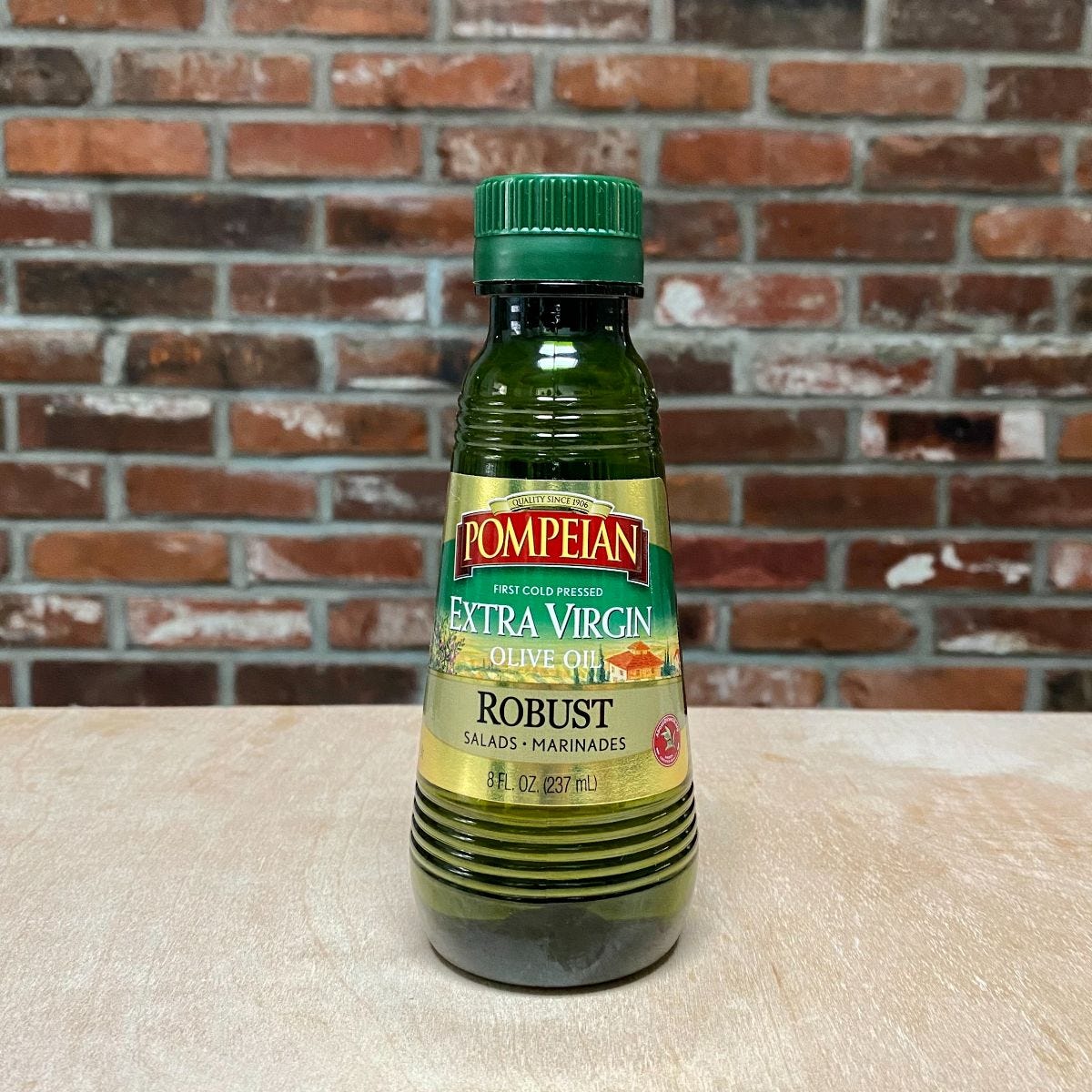
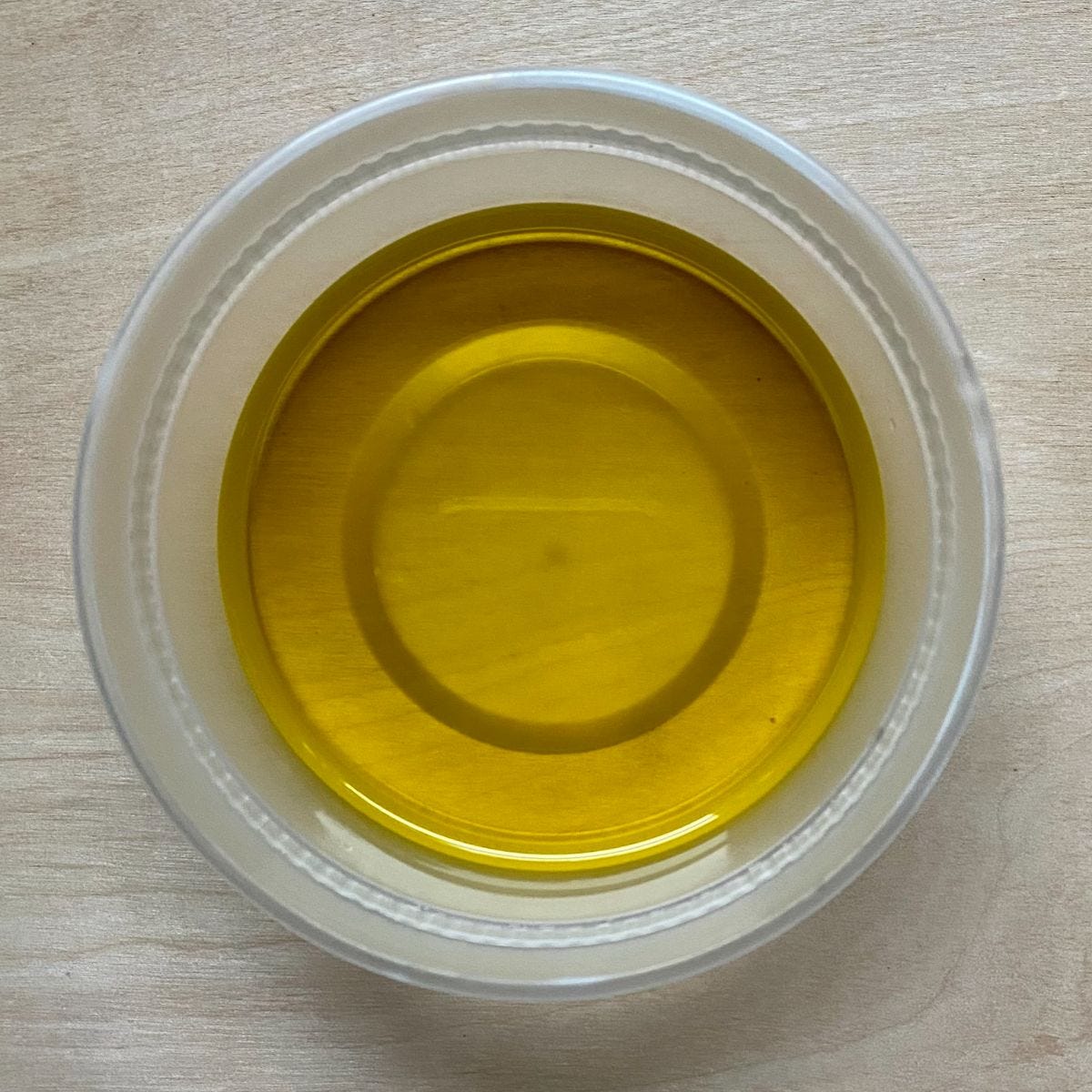
Ingredients: Not listed
Origin: Morocco, Tunisia, Spain, and Argentina
Date: Best by 1/13/22
Acidity: Not listed
Packaging: Dark green plastic bottle
Fridge Test: 24h very viscous, 48h solid
Taste Test: Fail
Dipping Test: Fail
Dressing Test: Fail
Final Thoughts: Pompeian has been around a long time. It is now owned by a Morrocan company and I can't find any information about the olives, farms, and manufacturing.
This oil is a blend from 4 countries!! That alone would steer me away from purchasing it. It failed all the taste tests because it was thick, bitter, and unenjoyable with no real olive flavor.
Colavita - Extra Virgin Olive Oil
8.5 fl. oz. - $6.49 - Hy Vee
Price per oz - $0.75
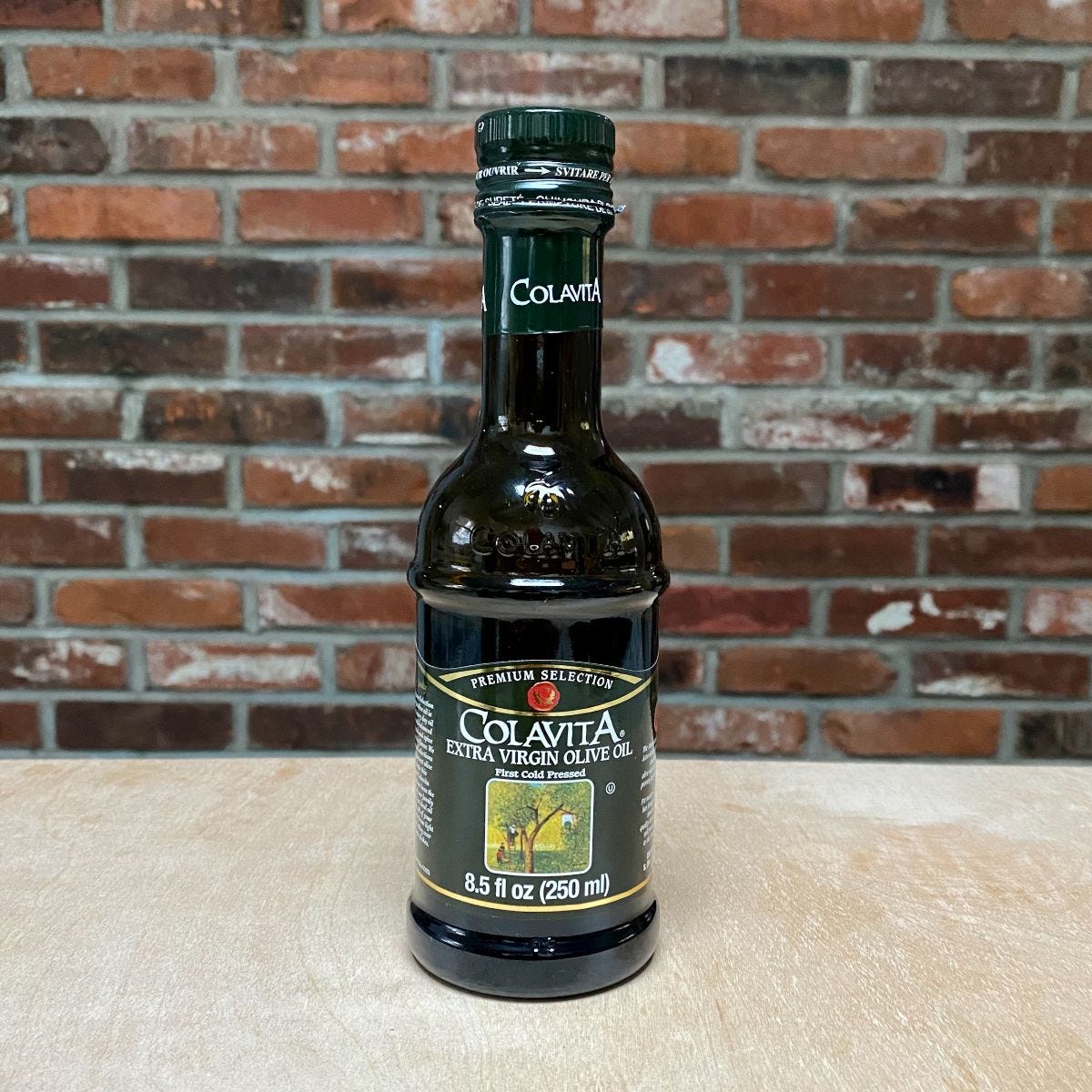
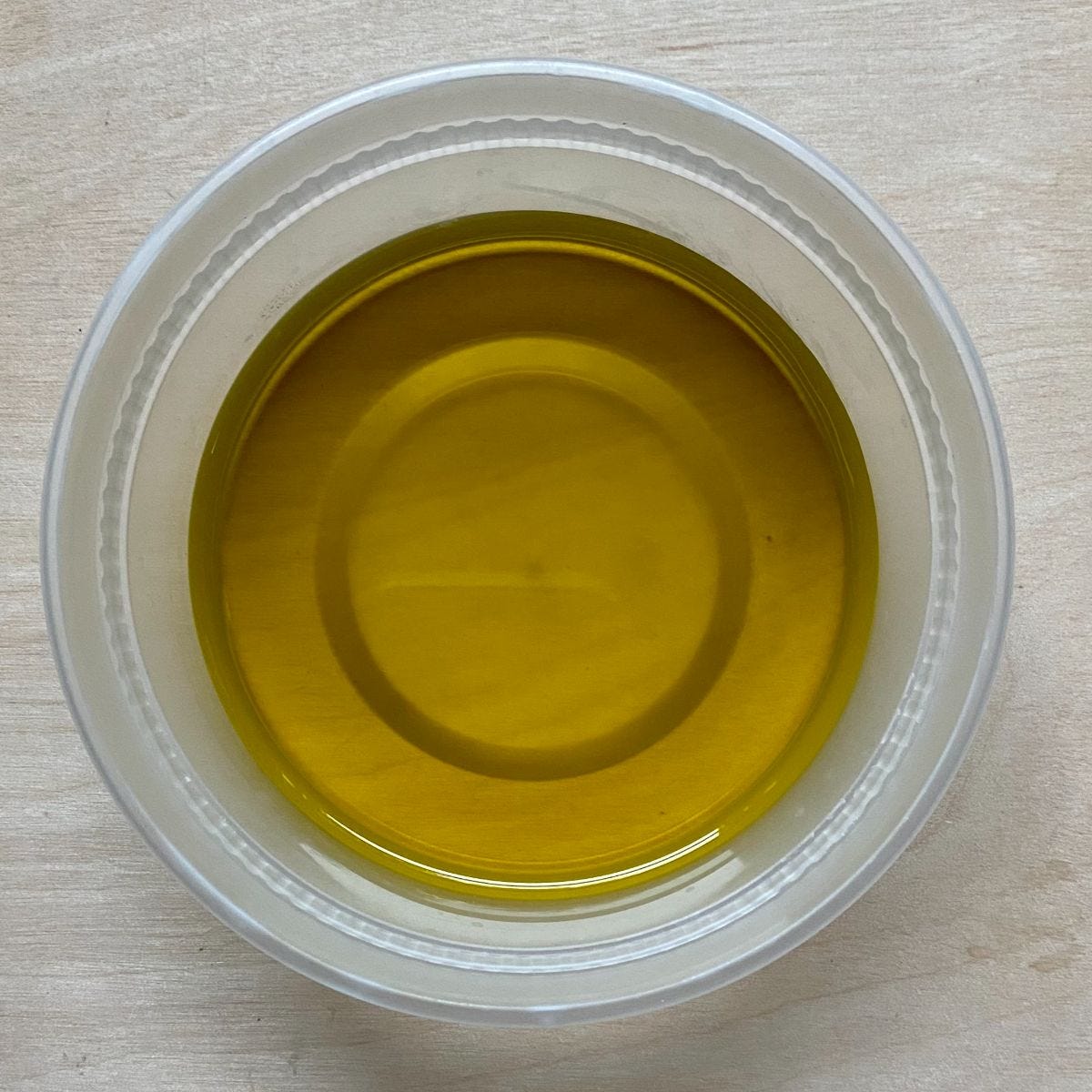
Ingredients: Extra Virgin Olie Oil
Origin: Greece and Portugal
Date: Best by 10/20/21
Acidity: Not listed
Packaging: Dark green glass bottle
Fridge Test: 24h chunky, 48h still liquid with solid chunks
Taste Test: Fail
Dipping Test: Fail
Dressing Test: Fail
Final Thoughts: This olive oil didn't taste bad but it didn't taste great. It is a blend from two countries and we are going to avoid blends! If this was the only oil at the store, I would buy it for cooking only. It wasn't tasty enough on its own.
Bertolli - Extra Virgin Olive Oil
8.45 fl. oz. - $4.59 - Hy Vee
Price per oz - $0.54
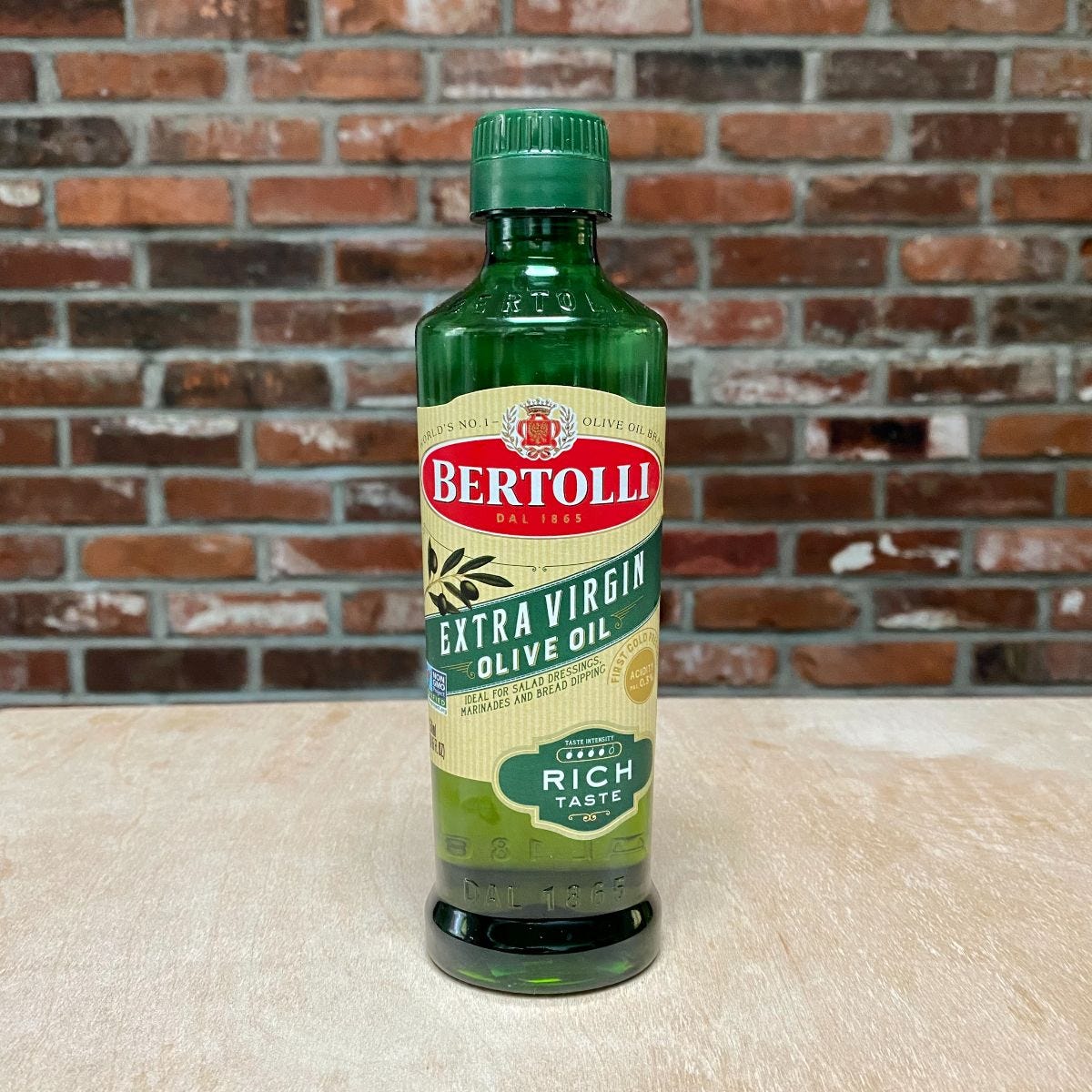
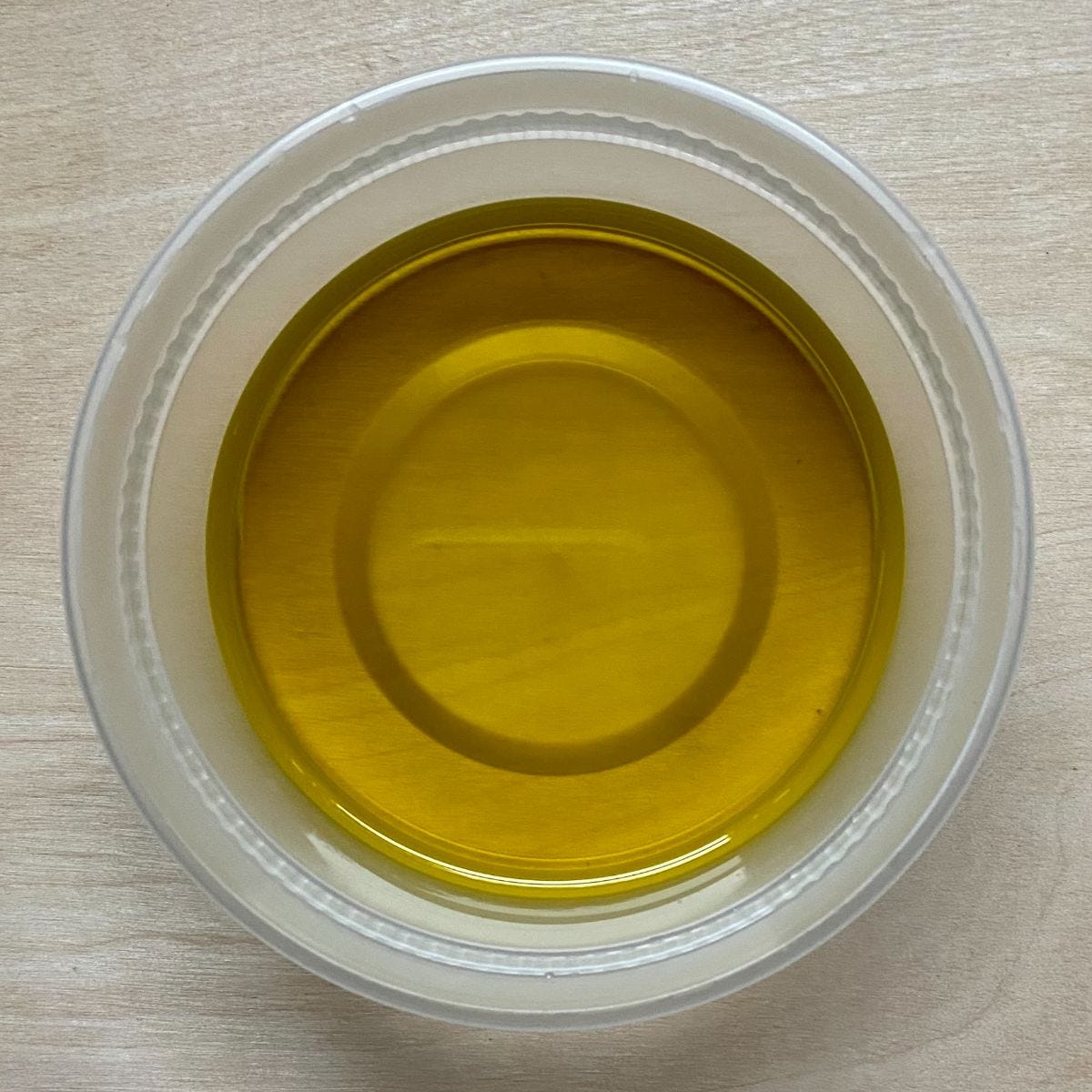
Ingredients: Extra virgin olive oil
Origin: Portugal, Tunisia, and Peru
Date: Harvest date 2019/2020, Production date 6/8/20, Best by 9/8/21
Acidity: Max 0.3%
Packaging: Dark green plastic bottle
Fridge Test: 24h some chunks, 48h solid
Taste Test: Pass
Dipping Test: Pass
Dressing Test: Neutral
Final Thoughts: We didn't dislike this oil! It tasted very olive-y. I appreciate all the labeling and transparency on the bottle but I don't love that it is a blend! If this was my only option I wouldn't be mad but it is not my first choice.
Trader Joe's - Extra Virgin Olive Oil
32 fl. oz. - $7.49 - Trader Joe's
Price per oz - $0.23
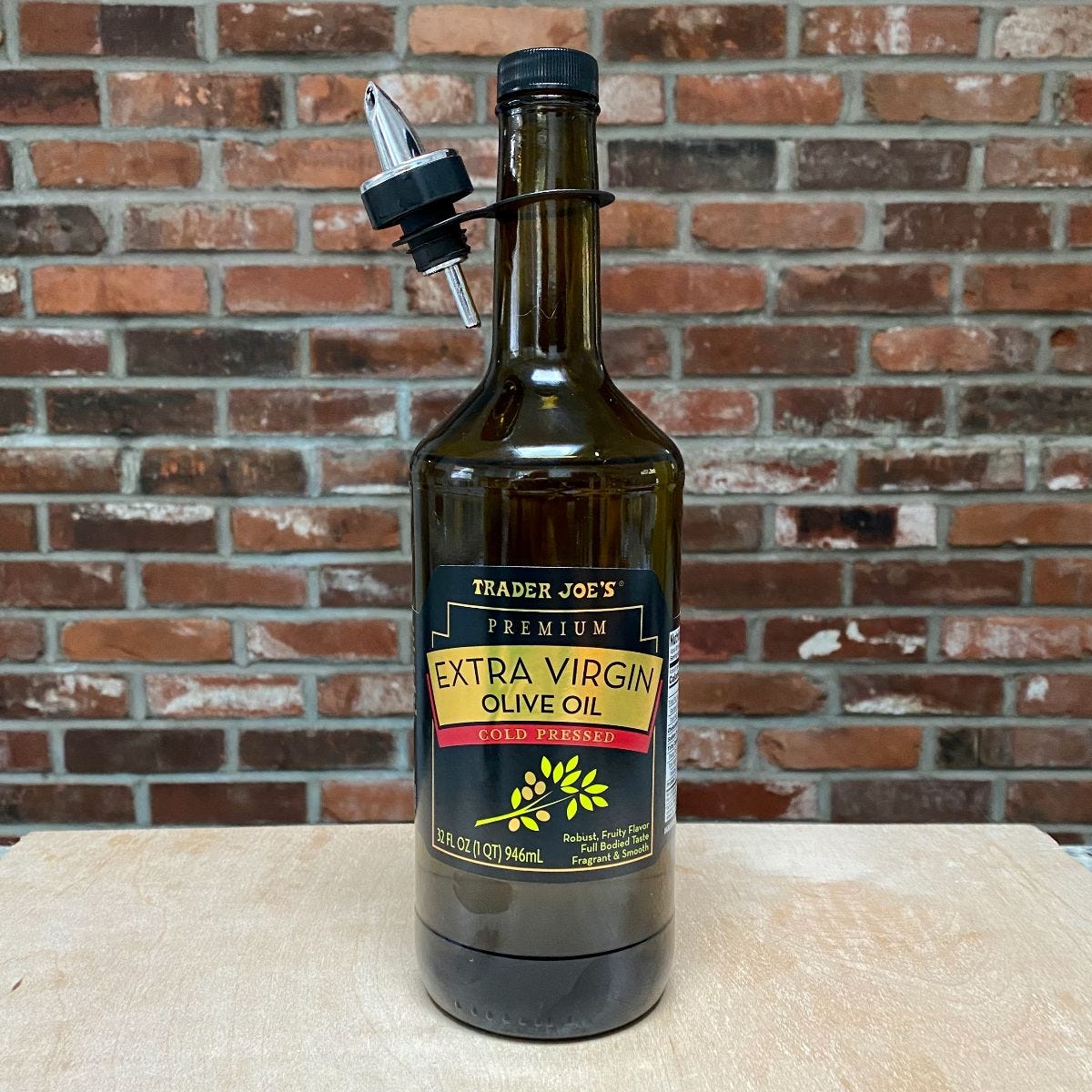

Ingredients: Extra Virgin Olive Oil
Origin: Oil from Spain, packed in USA
Date: Best by 9/22
Acidity: Not listed
Packaging: Dark glass bottle
Fridge Test: 24h solid, 48h solid
Taste Test: Fail
Dipping Test: Fail
Dressing Test: Fail
Final Thoughts: To us, this oil was very bitter and harsh maybe a little fusty? I'm not an expert taster and can not definitively say if it is bad. If you like the taste, go ahead and buy it, but I think there are much better options out there.
Olive oils I would maybe buy again:
365 Whole Foods Market - Extra Virgin Olive Oil, Italian
16.9 fl. oz. - $5.99 - Whole Foods
Price per oz - $0.35
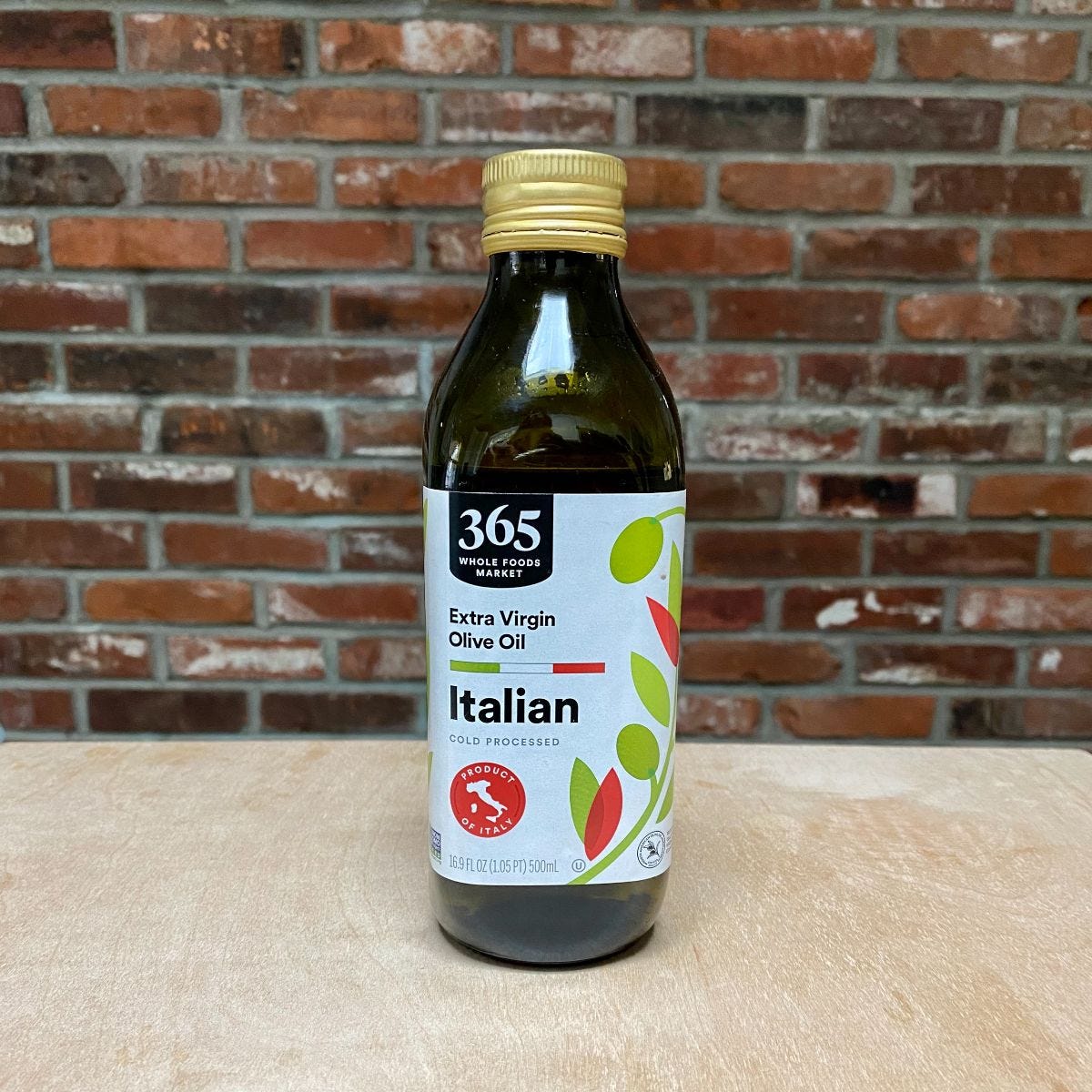
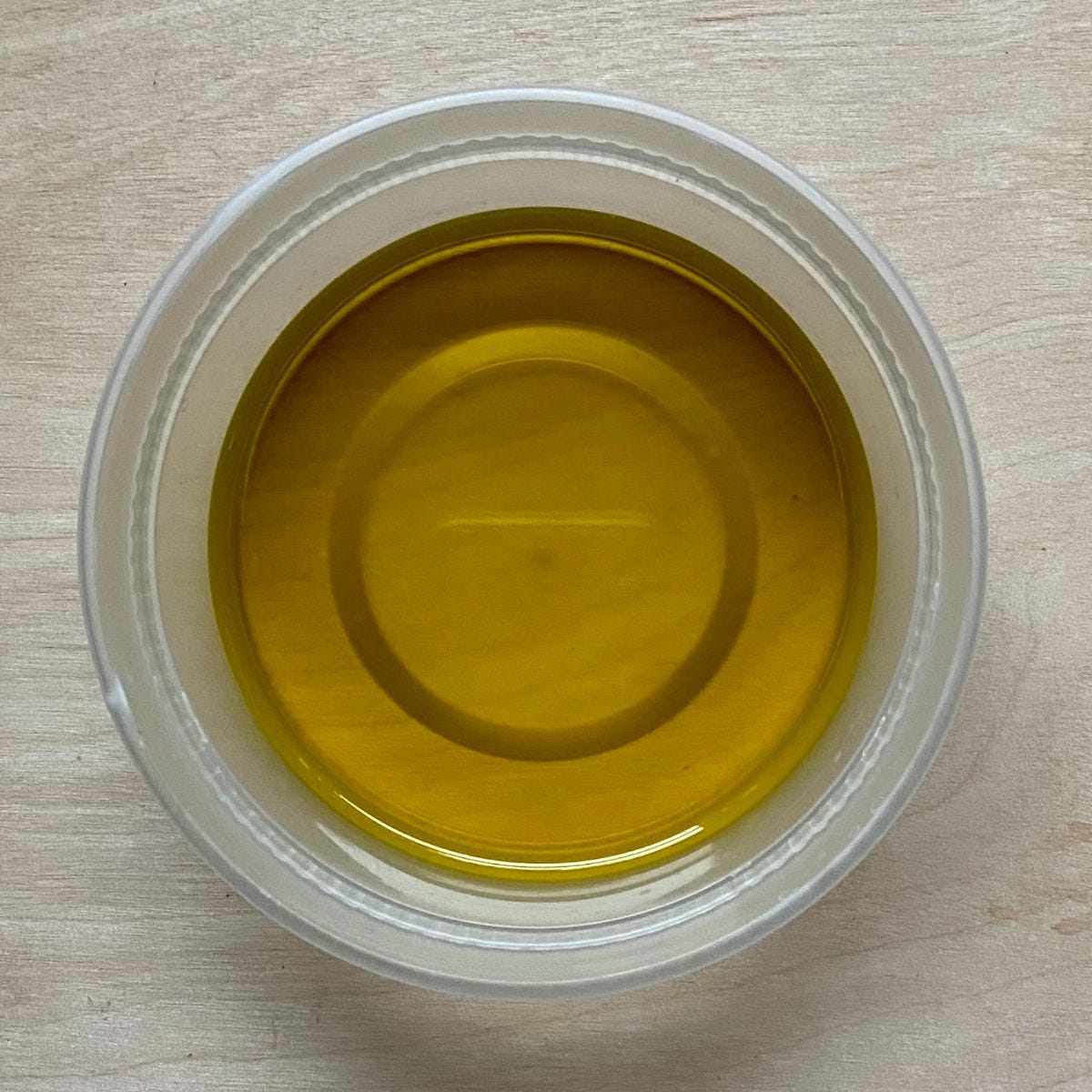
Ingredients: Extra virgin olive oil
Origin: Product of Italy
Date: Best by 1/14/22
Acidity: Not listed
Packaging: Dark green glass bottle
Fridge Test: 24h liquid, 45h liquid with slight chunks
Taste Test: Pass
Dipping Test: Pass
Dressing Test: Pass
Cake test: Slight olive scent, fruity olive taste
Final Thoughts: I liked the taste of this oil. It passed every test including the cake test. It's grassy, earthy, and a little fruity. I don't like how vague the details on the bottle are and I think we can find a better option.
Trader Joe's - 100% Greek Kalamata Extra Virgin Olive Oil
33.8 fl. oz - $8.99 - Trader Joe's
Price per oz - $0.26


Ingredients: Greek kalamata extra virgin olive oil
Origin: Product of Greece
Date: Best by 2/29/22
Acidity: 0.5%
Packaging: Clear glass bottle
Fridge Test: 24h viscous but not solid, 48h solid
Taste Test: Pass
Dipping Test: Pass
Dressing Test: Pass
Cake Test: Bold olive flavor present
Final Thoughts: I actually loved this olive oil. I could drink it. I found the flavors really enjoyable and bold without being too harsh. It had the most flavor of the four I baked with. I would like to know more about where the oil comes from and I don't love the clear glass bottle. Can we find a better option? Probably. Would I use this because I like it? Sure.
Olive oils I would buy:
California Olive Ranch - Extra Virgin Olive Oil
16.9 fl. oz. - $11.99 - Hy Vee
Price per oz - $0.70
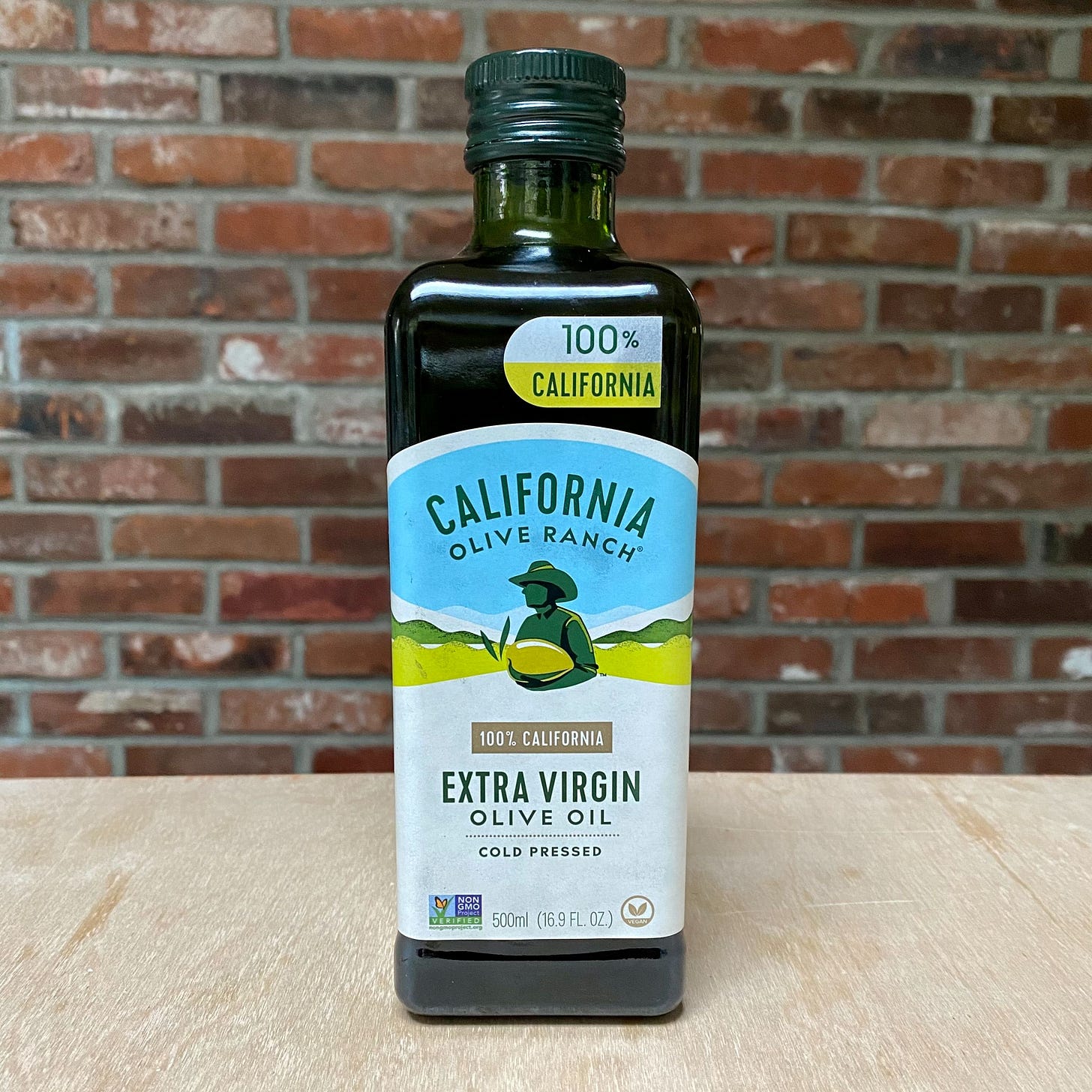

Ingredients: Extra virgin olive oil
Origin: Product of California
Date: Harvest date Oct-Dec 2019, Best by 7/21/22
Acidity: Not listed
Packaging: Dark green glass bottle
Fridge Test: 24h solid, 48h solid
Taste Test: Pass
Dipping Test: Fail
Dressing Test: Pass
Cake Test: Not much smell, very faint flavor
Best for: Everyday use, cooking, salad dressing, and mild flavor when used for baking.
Final Thoughts: California Olive Ranch is the leading producer of olive oil in the US. They produce high-quality olive oil due to intensively managed groves and have set the standards high for US producers. This oil has a mild flavor, green, grassy, and olive-y. This isn't the bold tasting oil I would choose to dip my bread into but for everyday cooking, I think it is a great option.
Lucini - Premium Select Extra Virgin Olive Oil
16.9 fl. oz - $19.29 - Whole Foods
Price per oz - $1.14

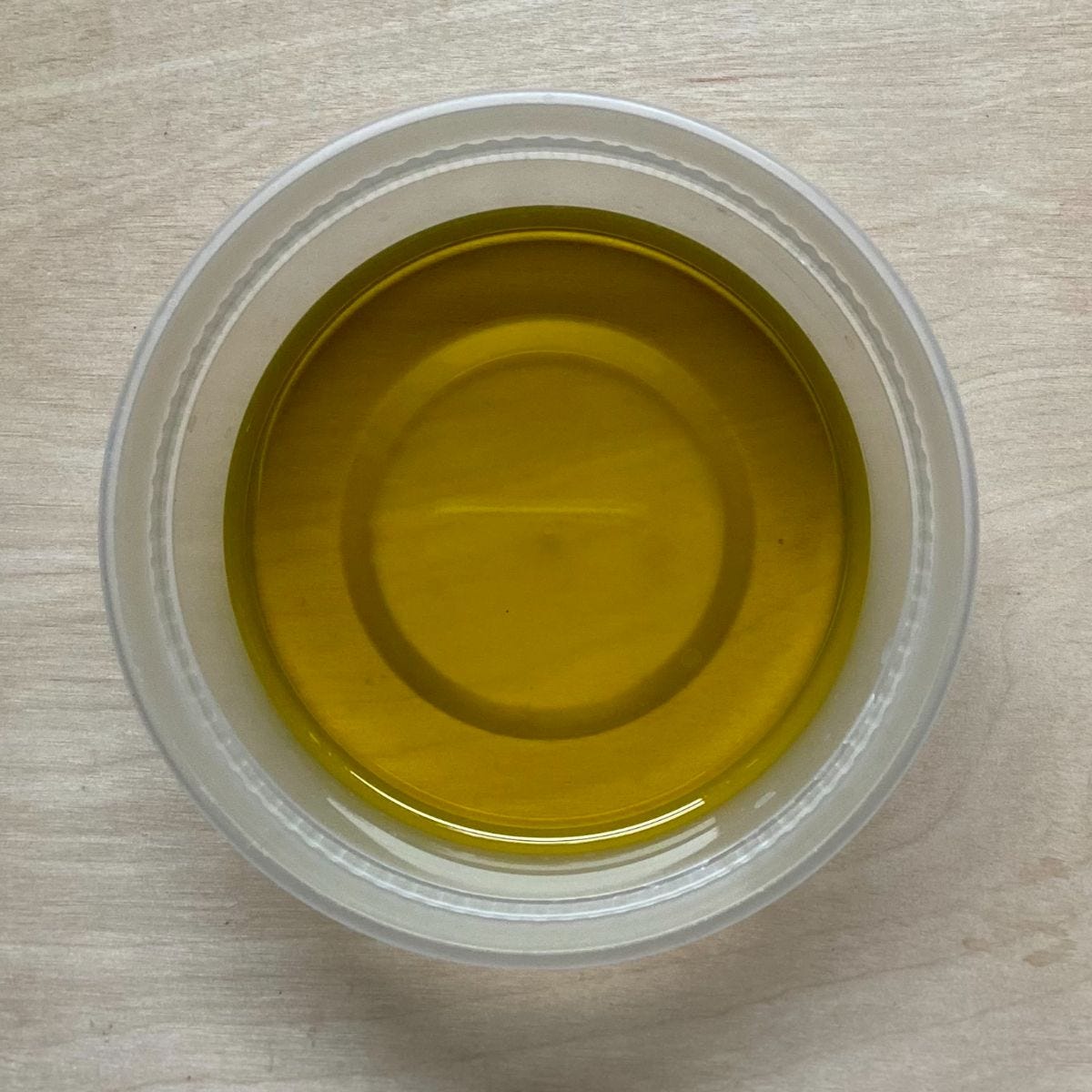
Ingredients: Extra virgin olive oil
Origin: Product of Italy
Date: Harvest date 2019, Best by 3/2/22
Acidity: 0.2-0.4%
Packaging: Dark glass bottle
Fridge Test: 24h liquid, 48h liquid with slight chunks
Taste Test: Pass
Dipping Test: Pass
Dressing Test: Pass
Best used for: Finishing, drizzling, and dipping
Final Thoughts: Lucini olive oil comes from Italy but the company is owned by California Olive Ranch. Like with wine, the soil that the olive trees are grown in play a factor in the oil flavor. So think of this as California Olive Ranch's Italian line. It has a fruity aroma, tastes pleasantly bitter, and had the most heat on the back of our throats. It is the most expensive of the ten oils and I didn't want to bake with it. I figured you guys wouldn't want to either. I use this bottle as a finishing oil and that's what I recommend you guys use it for as well. My only complaint is that I want more details about where the olives come from specifically and where it is manufactured.
Kirkland - California Extra Virgin Olive Oil
33.8 fl. oz. - $8.99 - Costco
Price per oz - $0.26
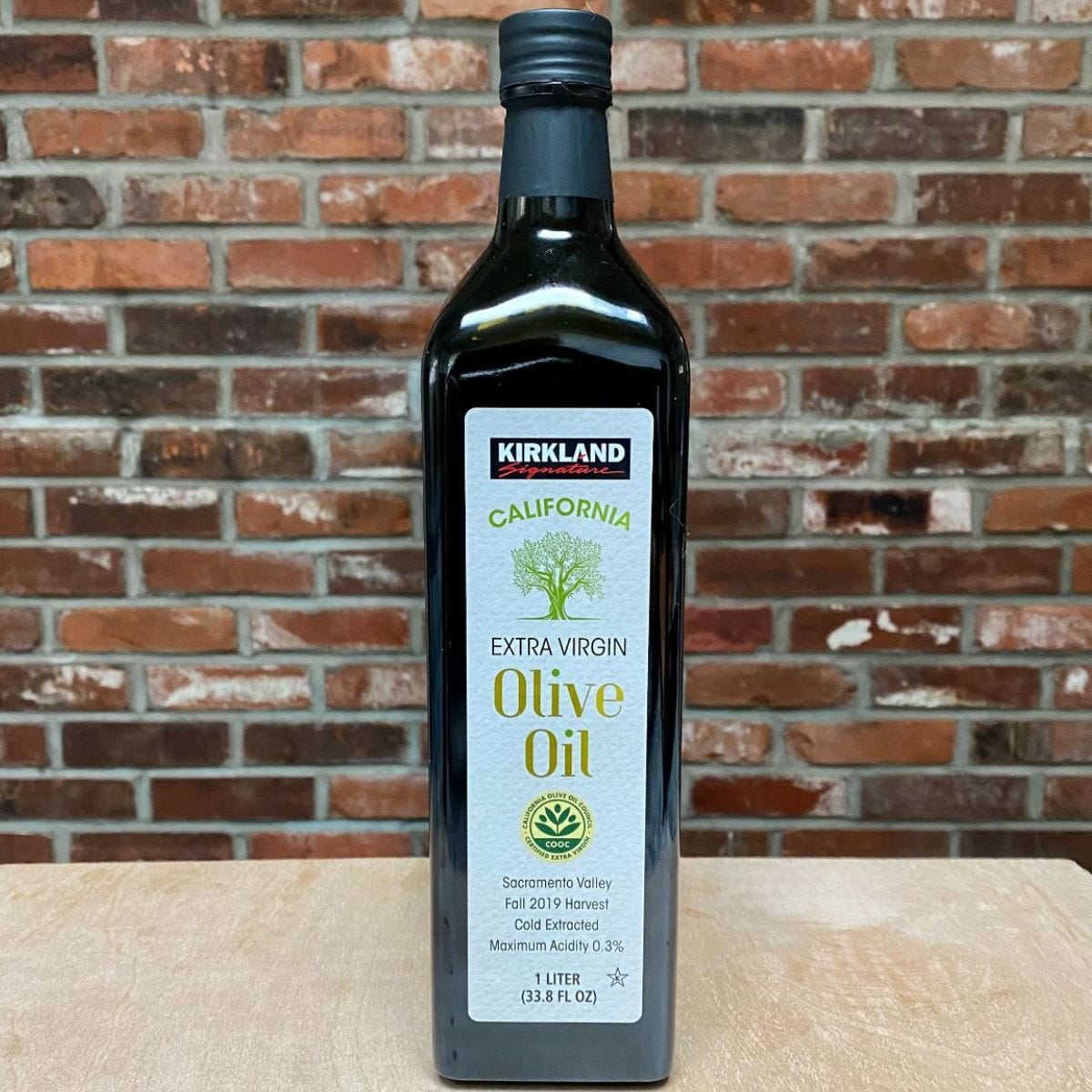
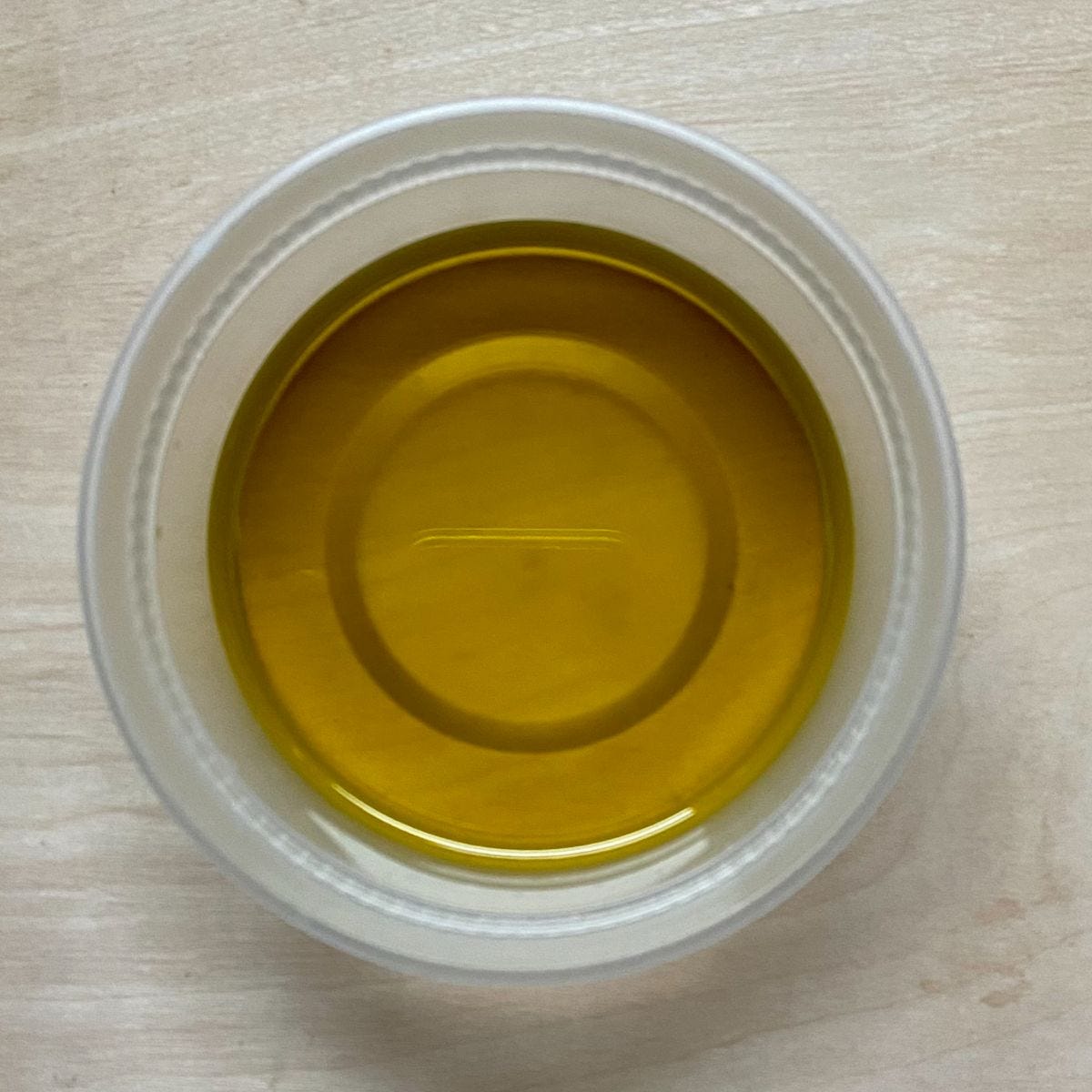
Ingredients: Not listed
Origin: Product of USA, California, Sacramento valley
Date: Harvest date Oct-Nov 2019, Best by 3/2/22
Acidity: 0.3% max
Packaging: Dark glass bottle
Fridge Test: 24h solid, 48h solid
Taste Test: Pass
Dipping Test: Pass
Dressing Test: Pass
Cake test: Olive flavor present but mild
Best for: Everything
Final Thoughts: Kirkland surprises me sometimes! They have some good products. It's grassy, fruity, and has little heat. It passed all our tests and the internet says great things about it. Samin Nosrat is a fan of it as well! The flavor was enjoyable and produced a mild-flavored cake when baked. I appreciate the details on their label and it's California grown!
Let's wrap this up
Now we have just dipped our toe in the world of olive oil but I feel confident that we can all pick a decent grocery store brand moving forward now.
I like Italian olive oils, followed by Greek, and California oils are a little too light for me. I am going to continue buying Costco olive oil for everyday use (I cook a lot) and keep a nicer bottle on hand for finishing. We have a few olive oil stores here and I'm going to stop in and try to find some nice options to try. I recommend you guys do that too!
I'm leaving this olive oil research project open. As I try new bottles I plan to update you guys in future newsletters. Brightland was requested and on my list. I still have a lot to learn and I'll share the info along the way.
It's November...get ready for Thanksgiving recipes!
See you next week,
Marcella



